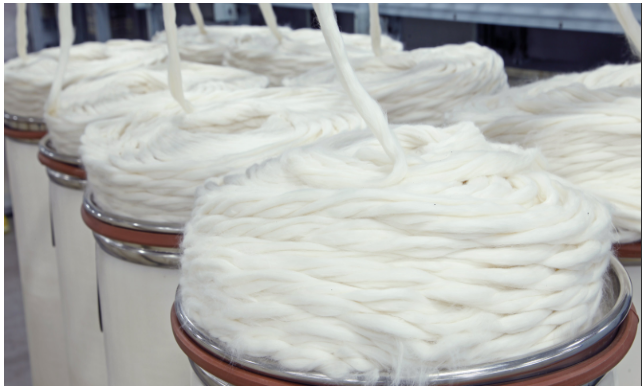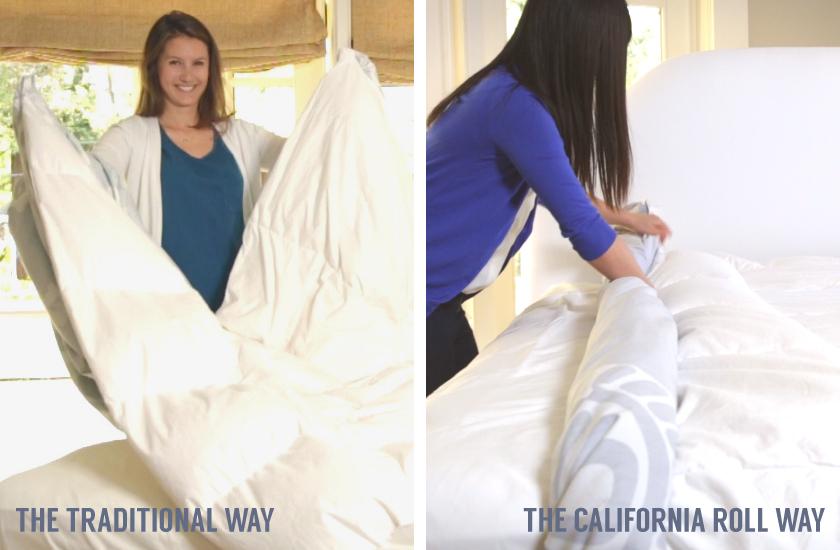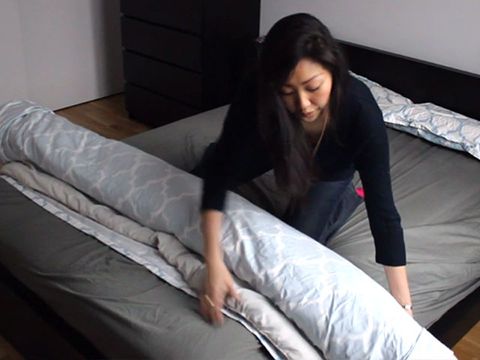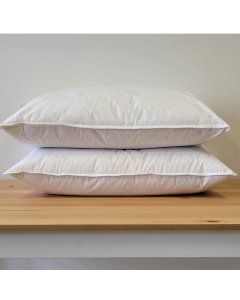Monthly Archives: July 2021
-
16 JulRead more »

Egyptian Cotton is cultivated to have fibres longer than 34mm, in order to produce a higher quality cotton cloth.
You've probably heard of Egyptian Cotton and always assumed there's something to it, but weren't sure quite what! This quick guide should help!
Cotton remains the most popular of natural fibres used in bedroom linens. It is breathable, absorbs moisture and is cool against the skin. But what makes Egyptian Cotton so special? Egyptian cotton comes from a native cotton plant from North America (Gossypium barbadense, aka extra-long staple (ELS) cotton). However, the climate in Egypt creates the right conditions for growing the ELS cotton used in luxury products worldwide, which is where Egyptian Cotton gets its name.
ELS cotton is cultivated to have fibres longer than 34mm, in order to produce a higher quality cotton cloth. Longer fibers mean a stronger fabric and ensure that a higher tread count cloth will result. Shorter fibres can come out of the weave which often results in weaker fabric.
However, if you see a product described as "Egyptian Cotton", it doesn't always mean that it's the highest quality cotton out there, though it should be at least of reasonable quality. The reason is that the number of threads used in the fabric is important as well. This is why thread count is so important. So, if you really want the highest quality cotton, aim for a high thread count and the Egyptian Cotton label. Click here to view our full range of Egyptian Cotton Bedding

Egyptian Cotton isn't the only thing to consider when seeking hotel quality bedding. Don't forget to check the Thread Count.
-
16 JulRead more »
3 Painless Ways How To Put On A Duvet Cover
While we can all agree that there's simply nothing better to give your room and mood a lift than a set of clean, fresh bedding; to many of us, changing our duvet cover is a daunting task! We've all been there, breaking a sweat as we try in vain to spread the duvet evenly within the cover, eventually hanging our heads in shame and calling someone in to give a hand...
With recent surveys showing that 80% of people find it frustrating to put their duvet cover on and the experts saying we should be changing our duvet cover every two weeks, that's a lot of hard labour racked up every year. To make things easier for you, Slumber Suite has compiled the most quick and painless ways to change your duvet cover to save you time and energy (and maybe your sanity).
How To Put On A Duvet Cover: The Old School Method
https://www.craneandcanopy.com/pages/101-how-to-put-on-a-duvet-cover

- Spread your duvet flat on top of your mattress.
- Turn your fresh duvet cover inside out and find the two top corners. Be patient as this may take a second with your duvet cover inside out!
- With your hands now inside the two top corners of the cover, grab hold of the two top corners of the duvet itself.
- Now for the moment of truth... Holding each corner tightly, quickly flip the duvet as smoothly as you can.
- Give it a good shake until the duvet is as aligned as you can make it inside the duvet cover.
- Adjust the corners on the bottom side by hand and zip up. You're done!
- While the flip aspect of this method requires some finesse, with a bit of practice you'll soon feel like a duvet flipping ninja.
How To Put On A Duvet Cover: The Burrito
https://lifehacker.com/5914894/put-a-duvet-cover-on-with-minimum-effort-by-rolling-it-like-a-burrito
- Turn your duvet cover inside out and lay it flat on the bed.
- Spread out the duvet on top of it with all the corners aligned.
- Starting at the closed end of the cover, begin carefully rolling both the cover and the duvet together, ensuring you keep the roll as taut as you can.
- Roll up right to the end until you have a nice burrito shape.
- Open up the cover and reach in, grabbing the end of the burrito and pulling it all the way through.
- Do the exact same at the

-
16 JulRead more »
Melted Snowman Biscuits
School is officially over for the holidays so you’ll have plenty of time to spark your child’s creativity with this fun and incredibly simple Christmas cookie recipe. Disney's Frozen is still as popular as ever, so these melting snowmen should amuse and delight your little ones to no end. We also know you’ll have an endless swarm of godchildren, nieces, nephews and more of Santa’s helpers to feed and entertain this year, so just make sure your batch is big enough…

Serves 16 People
Cooking Time 2-3 Hours
Difficulty Easy
Ingredients
400 grams of Sugar Cookie Mix
60ml Water (4 tbsp)
8 Oz. White Cookie Ic
-
2 JulRead more »
How to Choose the Perfect Pillow!
While most agree that a high thread count is indicative of high quality sheets or duvet covers, pillows are different. Some people prefer firm pillows, such as a dense microfibre pillow, while other prefer a soft feather pillow. Other people prefer no pillow at all!. Read our guide below on how to choose a pillow for you!
What's your Sleeping Position?
Firstly, it's important to know what position you sleep in for the majority of the night (some people alternate).
- For Back Sleepers , a pillow needs to support your neck and head, but not to the extent that it feels unnatural. Your neck and spine should be aligned while you snooze, so back sleepers generally benefit from a pillow with a medium firmness.
- Side Sleepers will benefit from a pillow with a high firmness rating. If your pillow is too soft, your spine will no longer be in neutral alignment as your head sinks into the pillow over the course of the night. Look for memory foam, microfibre, latex or pocket sprung pillows. Generally, side sleepers should avoid feather pillows due to their lack of support. However, some side sleepers like to use a combinatinon of soft pillow on top and firmer pillow underneath it.
- Front Sleepers (or stomach sleepers) generally prefer soft pillows, compressible pillows. Look for microfibre pillows with a "soft" rating, or a goose feather or duck feather pillow.

See our full range of pillows here. Feel free to Contact Us with any questions, we're happy to help!

